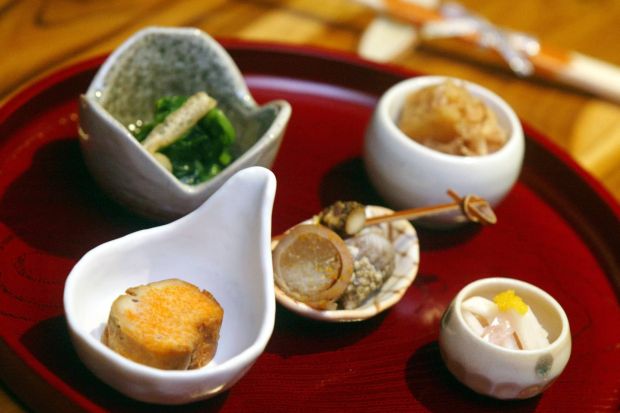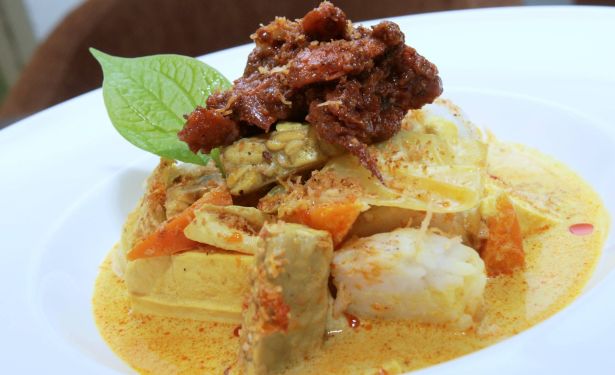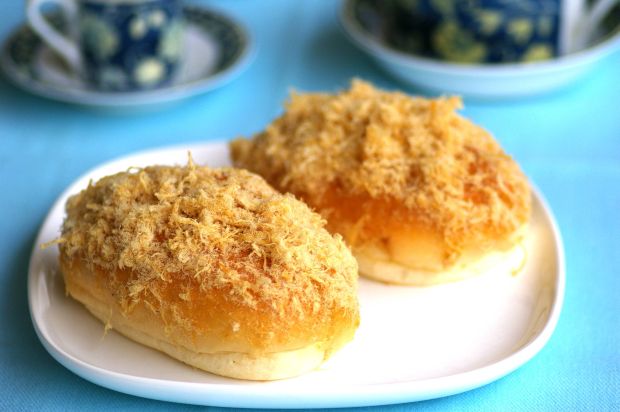HANARE,
Lot G 06, Ground Floor,
The Intermark, 182, Jalan Tun Razak,
50400 Kuala Lumpur
Tel: 03-2164 2133
Business hours: Noon to 2.30pm;
6.00pm to 10.30pm.
WHEN his favourite Japanese restaurant was forced to close down due to financial difficulties, businessman Gan Kok Beng decided to take over the team and start his own restaurant.
“I tried this restaurant in Menara Keck Seng in January last year and I was impressed with the food.
“It was different from the other Japanese food in Malaysia,” said Gan, who owns a few other restaurants around Kuala Lumpur.
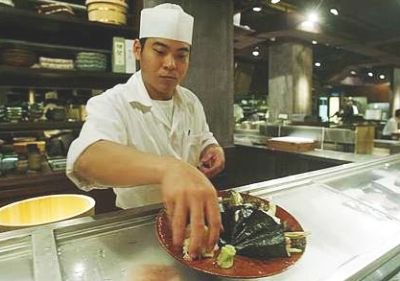 Simple pleasures: Hanare’s specialty is the Omakase concept, where the chef will surprise you with a course menu according to your budget and preferences.
Simple pleasures: Hanare’s specialty is the Omakase concept, where the chef will surprise you with a course menu according to your budget and preferences.When he went back to the same restaurant a few months later, the owner said he intended to sell the eatery.
After three months of negotiations, Gan decided to take over the key staff and started Hanare.
It took Gan and his team a few months to scout for a suitable location and they ended up at The Intermark, a relatively new name but is in fact the former Plaza Yow Chuan located strategically at the busy junction of Jalan Tun Razak and Jalan Ampang.
The interior of Hanare exudes a classy elegance with its wood finishing and spacious dining area, providing a cosy ambience to savour the fine Japanese cuisine prepared by executive chef Shinji Sudo.
Having full confidence in Sudo and his team, Gan does not get involved in the running of the restaurant.
“We serve authentic and traditional Japanese food that is fresh and healthy. What sets us apart is that we have a team in Japan who purchase fresh seafood from the famous Tsukiji Market in Tokyo and deliver it to the restaurant three times a week,” explained Gan.
While this process meant higher costs, Gan said their customers were willing to pay for good quality food.
One of Hanare’s specialties was the Omakase concept, which Gan explained meant “at the liberty of the chef”.
“The Omakase is very popular with the Japanese customers.
“They would go over to the sushi counter and interact with the chef,” he said.
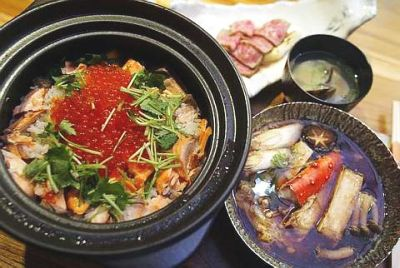 Complete meal: The mini Omakase set also includes the Salmon Claypot Rice (left) with salmon roe that bursts flavours onto the palate with each bite. Also served with the set is the seafood soup and seared wagyu beef.
Complete meal: The mini Omakase set also includes the Salmon Claypot Rice (left) with salmon roe that bursts flavours onto the palate with each bite. Also served with the set is the seafood soup and seared wagyu beef.Instead of ordering from the a la carte menu, the chef would then prepare a special course menu that could range from between RM180 to RM300 per set.
“That’s where the skill of the chef comes in and he has to be on the ball. Customers can either be fully surprised or they can tell him what they want or don’t want in the set. They can also tell him how much they are willing to pay and he would prepare the menu,” said Gan.
He said that Sudo would remember customers’ preferences and would never serve them the same food on their next visit.
Hanare has also introduced a mini Omakase set for lunch on Fridays at RM150 per set.
 Fresh supply: The seafood served at the Hanare Japanese restaurant is carefully selected and brought in three times a week from the Tsukiji Market in Tokyo.
Fresh supply: The seafood served at the Hanare Japanese restaurant is carefully selected and brought in three times a week from the Tsukiji Market in Tokyo.It starts with a glass of sake and appetisers, including a delightful homemade tofu served in a light soy sauce.
The other dishes served change every week depending on the items delivered from Japan and on the ingredients in season.
During our visit, the salmon claypot rice prepared by Sudo was a pleasant surprise, even for Gan who has not tasted it before.
“Because they decide on the menu, even I am surprised by Sudo when I eat here,” said Gan.
The Japanese rice was cooked with salmon chunks in a claypot and topped with salmon roe.
The dish was mixed together just before being served and the whiff from the steaming rice was very appetising.
As you take in bites of the rice, the tiny bits of salmon roe bursts and releases flavours on the palate.
For those looking for a lighter lunch option, Gan said there was also the Light and Easy lunch set available for RM38.
The set starts off with a crisp salad topped with the chef’s own radish dressing and a main dish prepared by the chef, again based on available ingredients.
Commenting on the recent concerns about seafood brought in from Japan, Gan said that the seafood would be approved by the Japanese authorities before being shipped to Malaysia and again tested by the Malaysian authorities before they were allowed to open the seal and receive the goods.
“It’s approved by two different authorities and that’s why we can be assured of the quality,” he said.
To promote the Japanese cuisine in times of crisis after the March earthquake and tsunami, Gan said that they would be having a Go Nippon Sushi promotion where various sushi items would be available for RM5 during dinner on Saturdays and Sundays.
This is the writer’s personal observation and is not an endorsement by Star Metro.
